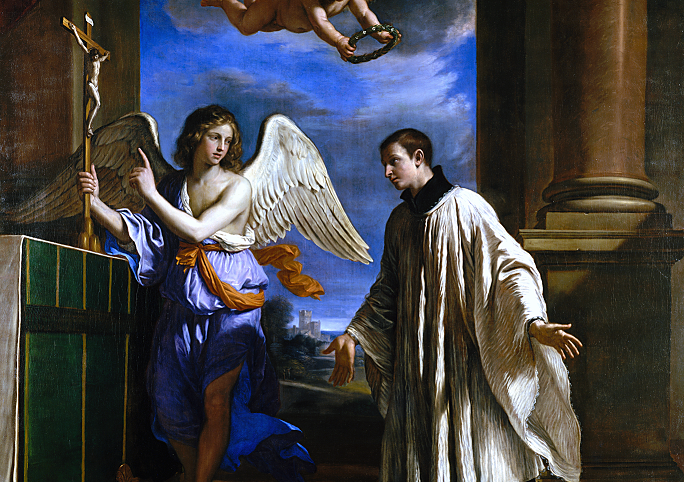
On this day, Saint Aloysius Gonzaga was born in the castle in the Italian village Castiglione delle Stiviere. His Gonzaga family was one of the most prominent ruling dynasties in Italian history. Already in the Middle Ages the Gonzagas became the rulers of an important town of Mantua. Over time, their reputation grew and so did their titles. Thus they became the Marquises of Mantua (Marchesi di Mantova), and then even Dukes of Mantua (Duchi di Mantova). The family branched out, with younger lines receiving various feudal estates in Italy and Europe. The Gonzagas gathered quite a collection of properties and titles: Dukes of Guastalla, Dukes of Sabbioneta, Marquise and Dukes of Monferrato, etc. The Gonzaga family produced as many as 12 cardinals and 14 bishops.
Saint Aloysius Gonzaga, as the first-born son, was in line to inherit his father’s feudal estates and become the Marquis of Castiglione. However, from an early age he was attracted to the Christian religion and wanted to join a religious order. His father did not like this, because he believed that the eldest son should inherit his father and that it is only appropriate for him to become a soldier.
However, St Aloysius was not dissuaded. At the age of 17 he entered the Jesuit Order, where he had to renounce any right to his inheritance or titles. Indeed, he did that for his faith and the family legacy was passed on to his younger brother, Rodolfo. Saint Aloysius, already from early childhood, had health problems and probably suffered from a few illnesses (kidney problems, skin disease and other problems). Over time, his health deteriorated.
In the year 1591, a plague broke out in Rome and Saint Aloysius, as a young Jesuit novice, volunteered to work at the hospital. They put him to work in a ward where there were no plague victims, as they were afraid to lose him. But a man in his ward was already infected and St. Aloysius soon got the plague. They expected that he would die in a short time, and he was even given the anointing of the sick. However, he recovered, but his health was even worse than in childhood. As a consequence of the disease, Saint Aloysius Gonzaga died at the age of only 23 years, still a Jesuit novice.
Shortly after his death, many begun to be consider him a saint, due to the exceptional dedication and sacrifice that he showed during life. Pope Paul V beatified him only 14 years after his death, and in 1726 he was declared a saint of the Catholic Church. He is considered the patron of the young, students, Jesuit novices, plague victims and their caregivers, and more recently AIDS sufferers, and even those who provide nursing care to those suffering from AIDS.




